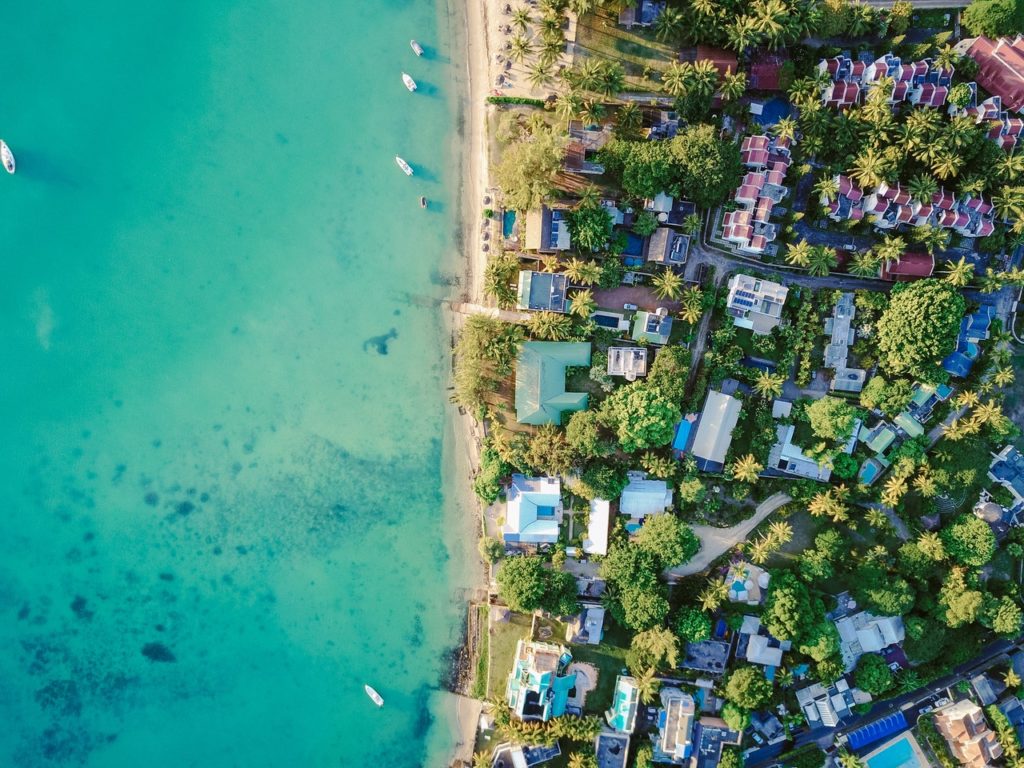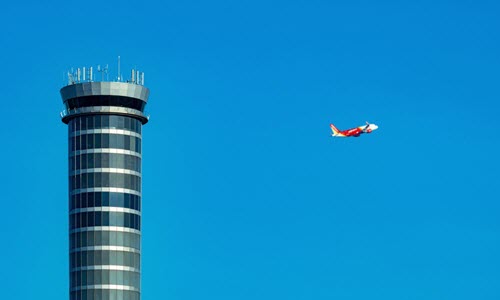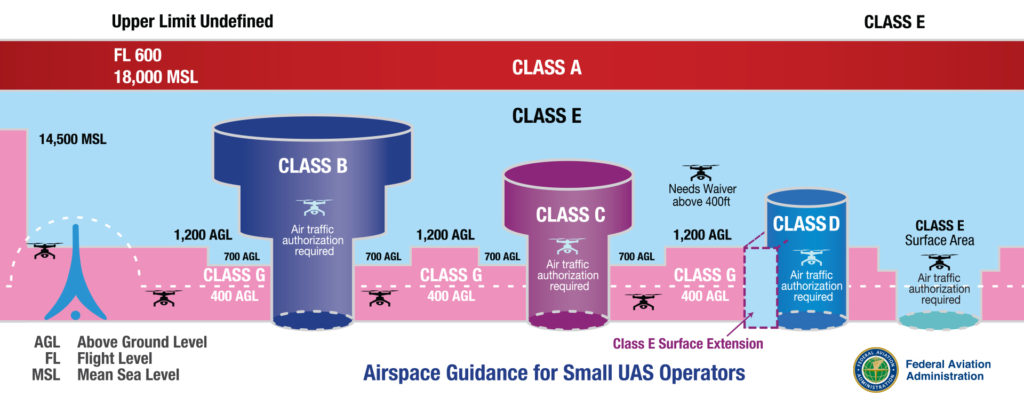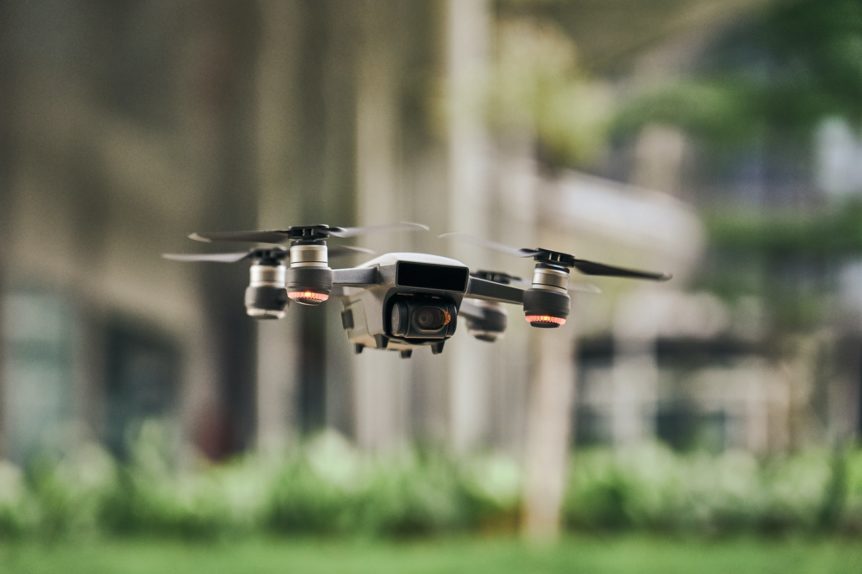It’s a sunny Sunday. You’re in your backyard grilling some hotdogs and burgers for your family, as the kids splash about in the pool – the perfect way to spend a summer afternoon.
Moments later, you hear what sounds like a high-pitched whirring sound coming from above. You look up and spot a drone hovering over your property. You give it a minute or two to see if it flies away. And, sure enough, it does.
But, just as you’re about to breathe a sigh of relief, it hovers back. Is someone spying on you? Are criminals using it to scout your residence? The only thing you’re sure of is that whoever’s flying it over your home is up to no good, and you want the darn thing gone.
You wonder — Is it legal to shoot down a drone?
Well, before you grab your shotgun and point it at the flying menace, here’s everything you need to know about the laws of airspace.
Is It Legal to Shoot Down a Drone – The Legal Perspective
The Federal Aviation Administration (FAA) is the agency of the US Department of Transportation responsible for regulating and overseeing all matters related to civil aviation within the country.
So, what does that have to do with drones?
The short answer is – everything.
According to the FAA, any unmanned aircraft, regardless of how big or small it is, is covered under Title 18 of US Code 32.
A drone is, by this very definition, an unmanned aircraft. So, shooting it down would be a violation of US Code 32 and could see you spend a considerable portion of your life behind bars if convicted – up to 20 years!
Okay, so it’s clear that shooting down a drone is out of the question. But what about intercepting control or “jamming” the offending drone? That seems like a more “reasonable” approach, right?
Wrong.
The Communications Act of 1934 outlaws any form of interference with radio transmissions. So, jamming it would essentially be a criminal offense.
Between these two federal statutes, using any of the existing anti-drone technology available in the market to shoot down drones, or jamming their network signals, could land you in quite a bit of legal hot water. Even shooting a drone with a non-lethal weapon – like a net gun – will yield similar consequences.
Although it might seem unfair to be powerless over someone flying a drone over your property, there’s a legal reason why – You may own the property you’re standing on, but not the airspace above it.

Who Owns the Air Above Your Property?
To better understand the answer to this question, let’s take a trip back in time to 1946, when a North Carolina chicken farmer named Causby filed a lawsuit against the US government for trespassing on his property. Not on his land, but the air above it.
You see, the US Army and Navy operated an airstrip that was adjacent to his farm. The runway’s glide path extended directly above Causby’s house and outbuildings. So, as you can imagine, there was always quite a bit of commotion every time fighter jets, bombers, and other planes routinely flew over the property.
According to him, the noise was so startling that he had to give up his flourishing chicken business since he would lose six to ten birds every day when they flew into the walls out of fright.
At night, the glare from the exceptionally bright lights, coupled with the noise from the flying airplanes, frequently deprived him and members of his household of sleep. Based on those extenuating factors, it would appear that he was perfectly justified in his suit.
The Old Common Law Rule on Property Ownership
Keep in mind that at the time, the old common law rule was applicable in all US jurisdictions. According to it, a property owner had legal rights over all the land beneath their property – which was a great thing if you happened to have gold deposits underneath – as well as all the sky above it, up to the “periphery of the universe.”
The United States v. Causby case gave rise to the “enveloping atmosphere” rule. It states that a property owner has legal possession over as much of the airspace above their property that they can reasonably use. The airspace above that would then be considered part of the public domain.
The enveloping atmosphere rule is what protects drones. You only own the airspace above your land that you can “reasonably use.” You can think of the rest of it as a public highway.
Technically-speaking drones won’t typically fly in the lower airspace that is directly above your property, nor will they fly in the upper airspace that is used by airplanes. They fly somewhere in between.
Drone Laws
But drone operators cannot operate with impunity. They must adhere to very strict federal laws and fly within allowable airspace. Violating airspace is a serious federal offense.
So, to gain a better understanding of this concept, let’s explore the various airspace classes that exist.

Airspace Classes
Have you ever wondered how airplanes fly around without ever colliding with each other? Or, the reason why some airports have control towers while others don’t? The answers to these questions have everything to do with airspace classes.
The United States airspace is divided into four distinct categories.
1. Controlled Airspace
This is a generic term that refers to the different airspace classes and defined dimensions that fall within Air Traffic Control (ATC). It consists of 5 classes, namely:
Class A Airspace
Class A airspace refers to the space between 18,000 ft. mean sea level (MSL) and flight level (FL) 600. It also includes the airspace above the waters that lie within 12 nautical miles (NM) off the 48 US contiguous states and Alaska.
Any operation in this class airspace has to be done in compliance with the existing instrument flight rules (IFR).
Class B Airspace
Class B airspace refers to space from the ground surface level to 10,000 ft. MSL that surrounds the country’s busiest airports. ATC clearance is required for any aircraft to operate within this area.
Class C Airspace
Class C airspace refers to the region between the ground surface level and 4,000 ft. MSL over and above airport elevation that surrounds airports with a functioning control tower. Each Class C space consists of a surface area with a five NM radius, in addition to an outer circle with a ten NM radius, extending from 1,200 to 4,000 ft. above airport elevation.
Before entering this airspace, each aircraft has to establish two-way radio communication with the ATC facility present and maintain this communication for the duration it is within the airspace.
Class D Airspace
Class D airspace refers to the airspace from the ground surface level to 2,500 ft. MSL above airport elevation, surrounding airports with a functioning control tower.
Before entering this airspace, each aircraft has to establish two-way radio communication with the ATC providing air traffic services and maintain that communication for the entire duration it is within that airspace.
Class E Airspace
Any airspace that cannot be classified as Class A, B, C, or D is generally considered Class E airspace. More often than not, it refers to the space between FL 600 and 18,000 ft. – the lower limit of Class A airspace.
2. Uncontrolled Airspace
Uncontrolled or Class G airspace, is the portion of airspace that doesn’t fall into any of the classes A to E.
Although ATC has no power to control, nor is it responsible for Class G airspace, anyone flying in this area should remember to apply the visual flight rules (VFR) minimum when operating any manned and unmanned aircraft (drones) in this space.
It extends from the ground surface level to the lower limit of the overlying Class E airspace.
3. Special Use Airspace
Also known as Special Area of Operation (SAO), special use airspace refers to the area designated for specific activities, or where certain limitations exist for an aircraft that doesn’t form part of those activities. It consists of:
- Alert areas – These are the areas with an unusual type of aerial activity or a high volume of pilot training.
- Controlled firing areas (CFAs) – These are the areas where the activities taking place there could be hazardous to a non-participating aircraft if not conducted in a controlled environment.
- Military operation areas (MOAs) – These are the areas reserved for military training activities. They are kept separate from IFR traffic.
- Prohibited areas – These areas ban aircraft flights for security, or any other reasons associated with the national welfare.
- Restricted airspace – These are areas with activities that would be considered hazardous to any other non-participating aircraft. Such activities include guided missiles, aerial gunnery, or artillery firing
- Warning areas – These areas are similar to restricted airspaces, except that the US government doesn’t have sole jurisdiction over the area in question. These may be located over domestic or international waters or both.
4. Other Airspace
“Other airspace” is a general term that refers to the vast majority of the remaining airspace that doesn’t fall into any one of the aforementioned aerial categories. It includes:
- Air Defense Identification Zones (ADIZ)
- Flight Restricted Zones – particularly those in the vicinity of the White House and Capitol
- Intercept Procedures
- Local Airport Advisory (LAA)
- Military Training Route (MTR)
- National Security Area (NSA)
- Parachute jump aircraft operations
- Published VFR routes
- Special Awareness Training
- Temporary Flight Restriction (TFR)
- Terminal Radar Service Area (TRSA)
- Wildlife Areas, National Parks, Wilderness, and any requests to operate above 2,000 above ground level (AGL)
Where Can I Fly My Drone

If you’re a drone operator, it may interest you to know that the FAA has a mobile application with an interactive drone airspace map that lets you know exactly where you can and cannot operate your drone. The B4UFLY app is available to download for free at Google Play Store for Android users, and the Apple App Store for those with iOS-powered devices.
Be that as it may, you still need to familiarize yourself with controlled and uncontrolled airspaces, while keeping in mind that there’s no such thing as “unregulated” regions.
Remember, controlled airspaces exist around some airports and in certain altitudes where ATC actively communicates, directs, and separates all air traffic. All other airspace is generally considered uncontrolled in the sense that ATC doesn’t direct air traffic within these limits.
The rule of thumb is that you can operate your drone in uncontrolled airspace below 400 ft. AGL. Anything is above that is considered a drone no fly zone. If you’re a commercial drone operator, you have to seek permission from the FAA before you can fly in controlled airspace.
It’s important to note that private pilots fly in both controlled and uncontrolled airspace. According to the FAA, it is your responsibility as a drone operator to obey the no drone zone restrictions, and stay away from any manned aircraft, and not the other way round.
Drone Airspace Restrictions
Here’s a list of the restrictions that commonly affect unmanned aircraft systems, including drones. Most of them feature in your average drone no fly zone map, although others are event-based.
- Emergency and rescue operations – Don’t fly your drone over wildfires, hurricanes, or any other emergency or rescue situation
- Near airports – Flying drones in areas with other air traffic is a safety hazard and are, therefore, prohibited – unless you get permission from ATC, have an agreement with the FAA, or are a public entity (government or law enforcement agency) with permission from the FAA
- Restricted or special use airspace – It is against the law to fly your drone in a prohibited or restricted area, or one with TFRs
- Security sensitive airspace restrictions – Drones are not allowed to fly over military bases, national landmarks, or critical infrastructure like nuclear power plants
- Stadiums and sporting events – You can’t fly a drone in or within a three NM radius of a stadium, one hour before or after a Major League baseball event, National Football League, NASCAR Sprint Cup, Champ Series, and Indy Car races
- Washington, DC – The region is classified as a special flight rules area.
Ignorance of the Law Is Not a Defense
No matter how annoying and invasive at it may seem, it is not legal to shoot down a drone.
But on the flip side, if you’re a drone operator, you could get into significant trouble for flying a drone in a no drone zone.
Ignorance of the law is not a defense. So, read up on aviation law and get to know the dos and don’ts of flying unmanned aircraft systems.
While the information detailed in this article is a great starting point, it always helps to talk to an aviation lawyer for any drone-related legal issues you may run into, as drones will likely become much more commonplace in our lives.
